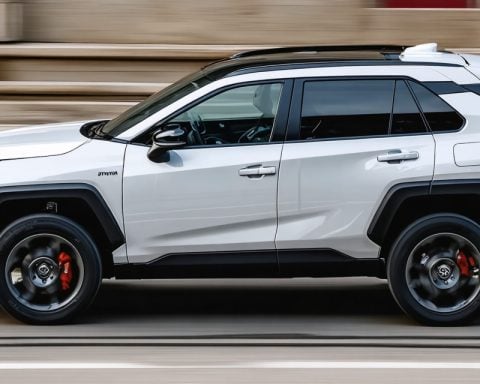The Shift in Canada’s EV Strategy
Canadians are facing a significant shift in the landscape of electric vehicles (EVs) as Transport Canada announced the abrupt discontinuation of the $5,000 rebate for EV purchases. This decision comes on the heels of Quebec’s suspension of its own $7,000 subsidy, raising concerns about the future of electric mobility in the nation.
The end of rebates signals trouble for an EV market that relies heavily on government incentives to entice consumers. Even with subsidies, the price of EVs continues to outpace internal combustion engine (ICE) vehicles, restricting accessibility primarily to wealthy buyers. The environmental benefits of EVs are also under scrutiny, as the resource extraction required for battery production involves significant environmental costs, often in countries with lax regulations.
With the withdrawal of consumer incentives, the government’s ambitious plan to transition to a fully electric fleet by 2035 faces serious challenges. The cold Canadian climate and inadequate charging infrastructure present additional hurdles. Currently, Canada boasts fewer than 30,000 public charging stations, far below the 400,000 needed to support the anticipated influx of EVs.
As the government moves forward with its mandate, many Canadian consumers may find themselves unprepared and unwilling to embrace electric vehicles without sufficient infrastructure, economic rationale, and reliable energy sources. The clock is ticking for policymakers to reconsider their approach and address the glaring gaps in the EV transition strategy.
Broader Implications of Canada’s EV Strategy Shift
The cessation of financial incentives for electric vehicles (EVs) in Canada raises profound questions about the future of sustainable mobility and its broader ramifications for society and the global economy. As Canada grapples with climate change commitments, the rollback of EV subsidies could stifle a critical industry transition, undermining the federal government’s goal of reaching net-zero emissions by 2050. A diminished EV market may hinder innovation in clean technologies, a sector poised to create jobs and drive economic growth.
Culturally, the move away from financial support for EVs risks entrenching the perception of electric mobility as a luxury rather than an accessible option for all Canadians. This could exacerbate existing inequalities where low-income communities remain dependent on conventional vehicles, which are not only cheaper upfront but also more readily available. The absence of robust incentives could also slow consumer acceptance of EV technology, affecting the cultural shift towards sustainability.
Environmental concerns extend beyond the immediate benefits of EVs. The urgency of addressing resource extraction practices for battery production and its ecological impact is magnified. Without government leadership in promoting environmentally responsible sourcing and recycling methods, Canada may inadvertently undermine the positive contributions of EVs in reducing urban emissions.
Finally, as global markets pivot towards electrification, Canada risks falling behind in the burgeoning EV industry. Countries with strategic investments in EV technology, infrastructure, and consumer incentives are likely to dominate the international market, leaving Canada at a competitive disadvantage. Maintaining a proactive and inclusive approach could ensure not only ecological benefits but also economic resilience in the face of an evolving automotive landscape.
Canada’s EV Landscape: What You Need to Know About the New Developments
The Shift in Canada’s EV Strategy
Canadians are witnessing a significant transformation in the electric vehicle (EV) market as recent governmental decisions spark concerns about the future of electric mobility in the country. Following Transport Canada’s abrupt announcement to discontinue the $5,000 rebate for EV purchases, which is compounded by Quebec’s own suspension of a $7,000 subsidy, the implications for consumers and the environment are profound.
Impact of Rebate Withdrawals
The elimination of financial incentives poses a tremendous challenge to a market that heavily relies on government subsidies to attract buyers. Historically, these rebates have helped offset the higher initial costs of electric vehicles compared to traditional internal combustion engine (ICE) vehicles. However, even with these subsidies, the average price of electric vehicles remains significantly higher, primarily restricting access to higher-income buyers.
Environmental Considerations
While electric vehicles are promoted for their lower emissions, the environmental impact of EVs is under scrutiny. The extraction of resources necessary for battery production often takes place in countries with less stringent environmental regulations, leading to considerable ecological costs. The sustainability of EVs increasingly comes into question as considerations regarding the full lifecycle of these vehicles emerge.
Infrastructure Challenges
In addition to financial barriers, the success of EV adoption in Canada is hindered by infrastructural challenges. Currently, the country has fewer than 30,000 public charging stations, starkly contrasting with estimates that suggest around 400,000 stations will be needed to support the growing number of electric vehicles anticipated in the coming years. The inadequacy of charging infrastructure, especially in remote and rural areas, raises concerns about the practicality of widespread EV adoption.
Issues Related to Climate and Energy
Canada’s cold climate poses additional hurdles for electric vehicle performance and battery efficiency. Consumers living in regions with harsh winters may find it difficult to rely on EVs, particularly if they encounter issues with battery range and charging times. Moreover, the reliability of energy sources used to power EV charging stations is crucial as the country moves toward a predominantly electric transportation model.
Pros and Cons of Canada’s EV Strategy
Pros:
– Potential for significant reductions in greenhouse gas emissions.
– Long-term savings on fuel and maintenance costs for EV owners.
– Promotion of technological innovation and job creation in the green energy sector.
Cons:
– The high initial purchase price of EVs continues to be a significant barrier.
– Lack of comprehensive charging infrastructure limits usability.
– The environmental impact of battery production presents ethical concerns.
Future Predictions and Trends
As Canada strives toward its ambitious goal of transitioning to a fully electric fleet by 2035, several trends are emerging:
– Increased Investment in Charging Infrastructure: To meet expected demand, there is likely to be substantial investment in expanding public charging networks.
– Technological Advances: Ongoing innovations in battery technology, such as solid-state batteries, may lower costs and improve performance, making EVs more accessible.
– Changes in Policy: Policymakers may need to reconsider their approach to incentives and infrastructure support to ensure a smooth transition for consumers.
Conclusion: A Call to Action
The recent shifts in Canada’s EV strategy underscore the urgency for policymakers to address existing gaps in infrastructure, financial incentives, and energy reliability. Without proactive measures, Canadians may find themselves stumbling in the transition to electric mobility. Addressing these challenges is critical not just for the success of electric vehicles but for the broader goal of achieving sustainable transportation solutions across the nation.
For more information on electric vehicles in Canada, visit Canada’s environmental services.













